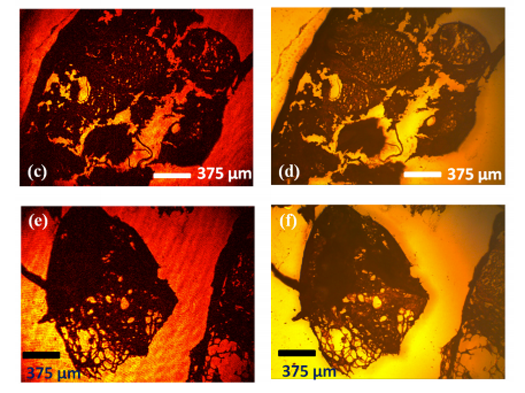Holographic Microscope Detects Bacteria on the Cheap
Researchers at UCLA have built a cheap, optics-free holographic microscope capable of detecting bacteria like E. coli in things like...

Researchers at UCLA have built a cheap, optics-free holographic microscope capable of detecting bacteria like E. coli in things like water, food, and blood. And by cheap, we mean really cheap. The researchers say it costs less than $100 to build.
The microscope has two ways of analyzing samples: a transmission mode and a reflection mode. The transmission mode is good for transparent media, like thin slices of a sample or clear liquids. In this case, the microscope’s laser can easily penetrate and analyze microscopic objects. For denser, more solid samples the microscope uses holography to generate a 3-D image of the sample that can be beamed to remote computers for further analysis if necessary.
In reflection mode, the microscope basically splits the laser beam using a mirror. It then uses one half of the beam to illuminate the sample. On the other side the sample beam and the control beam are recombined. Some “clever mathematics” can then use resulting the changes in the beam to generate a 3-D image of the object sampled.
But while that may sound fairly high-tech, there are no expensive optics or other pricey components required. The photo sensors are of the variety often found in smartphones, and small lasers like the one used in the device are really inexpensive these days as well. That all means that these holographic microscopes could be widely deployed at little cost.
And that’s the idea. Places that don’t have access to high-tech diagnostic equipment could use these devices to sample food and water–or even human blood–for harmful bugs and beam the images to more powerful computing devices elsewhere for analysis or diagnosis. That could help contain contaminations and outbreaks faster, saving lives while keeping costs down.